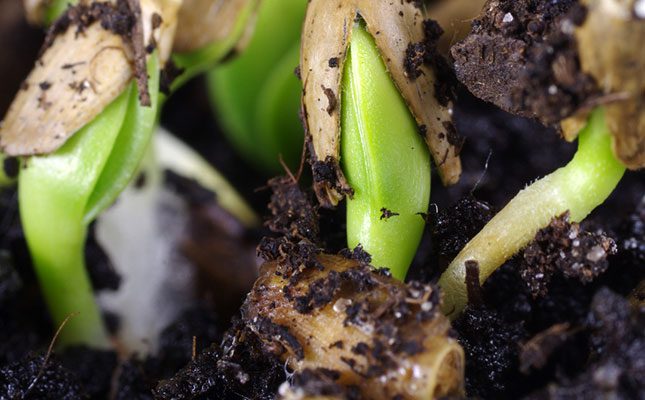
The multifunctionality of this phenomenon is evident in its roles in nutrient cycling, biological pest control, and the regulation of water and air availability, which are influenced by a combination of physical, chemical and biological factors.
The complex relationship between soil health, water quality, and climate change can involve multiple perspectives, resulting in a complicated theoretical mixture.
This overview focuses on farmers and their soil at grassroots level, with sustainability in mind within our practical reality. What steps can the farmer take to begin improving soil health?
Add organic matter to the soil
In South Africa, the levels of organic matter in soils are very low, with approximately 58% of soils containing less than 0,5% organic carbon. The amount of organic matter varies depending on factors such as climate, vegetation, topography and soil texture.
Increasing the organic matter in the soil will have direct and indirect benefits for soil quality. Microbes break down plant residues in the soil to convert them into carbon.
The availability of inorganic nitrogen, soil water conditions, and temperature all have an impact on the rate of decomposition. Increased cultivation can lead to a faster breakdown and depletion of carbon. Therefore, it is recommended to minimise tillage and promote root growth by using seaweed extracts, adding calcium, magnesium, zinc and boron, as well as using humic acid (liquid carbon).
Micro-organisms in the soil
There are two main approaches that could be followed:
Add microbes to the soil: Adding microbes to the soil can have beneficial effects. This can be achieved by using granular fertiliser that is coated with microbes, applying organic material that contains microbes, or using liquids that contain microbes. Dry products can be spread evenly over the soil or placed in specific areas.
Feed microbes already in the soil: There is a large population of micro-organisms in the soil, estimated to be around 100 billion per gram of soil. When plant roots are in the soil, they come into contact with these microbes. The highest activity of microbes is typically found in the top 20cm of soil. Therefore, it is beneficial to provide carbon sources such as humic acid and fulvic acid to feed these microbes.
Add ‘housing’ for microbes
Carbon, such as biochar, organic roughs, or humic acids, can be utilised as a soil amendment to enhance crop growth by regulating soil conditions. This is due to its distinctive qualities, including a large surface area, a rich pore structure, an abundance of oxygen-containing functional groups, and a high cation exchange capacity.
Spray microbes on plants
Each plant possesses a microbiome that consists of fungi, viruses and bacteria, which play crucial roles in the plant’s functioning and survival. These micro-organisms can be found in various areas, such as the root zone (known as the rhizosphere), the internal environment of the plant (endosphere), and the above-ground surfaces (phyllosphere).
Farmers have the option to introduce microbes to the plant’s above-ground growth through foliar sprays or to the soil through soil drenches.
Irrigation
The practice of wetting soil profiles and subsequently withholding water for an adequate duration to facilitate the re-establishment of oxygen in the soil is considered a beneficial approach, as it effectively mitigates the occurrence of prolonged anaerobic conditions.
Conclusion
Lastly, it is worth noting that crop rotation is a highly effective management strategy that exerts a significant influence on microbial diversity within the soil.
For more info, visit www.kynoch.co.za










